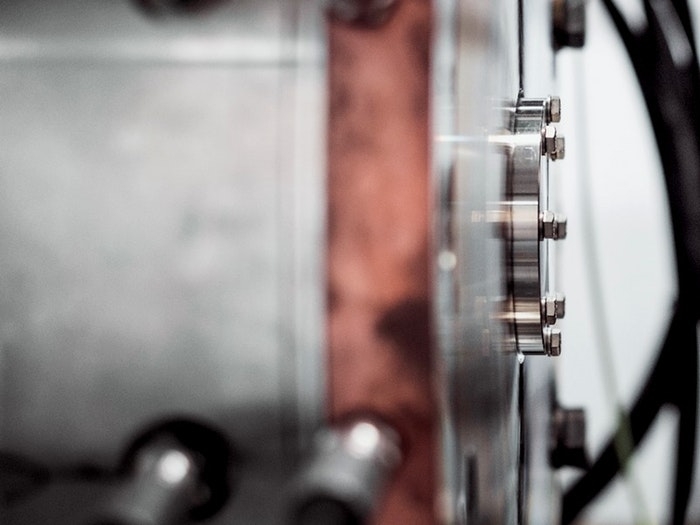
The functions performed by warehouses of receiving, storing, and dispatching goods to meet demand have always been essential in supply chains. Across the same time span, we have witnessed the growth in global sourcing and the rise of global markets with a concomitant growth in the product variety managed in warehouses. Warehouses have progressed from being a secondary service in business operations to being an integral part of high-performance supply chains because of their impact on responsiveness, service level, and costs.

To support these goals, you can invest in new technology or update existing solutions that will link your system with your suppliers to coordinate the delivery of parts and materials. ProjectManager is online work management software that acts as a single source of truth to keep everyone working more productively. Real-time data is ideal for JIT manufacturing because it keeps your crew working at capacity and moving forward without interruption. what production system is preferred by just in time While just-in-time manufacturing can be very beneficial, that doesn’t mean that JIT is without risks. In fact, it can greatly affect your production plan or production schedule if not done right. Sadly, Toyota’s JIT inventory system nearly caused the company to come to a halt in February 1997, after a fire at Japanese-owned automotive parts supplier Aisin decimated its capacity to produce P-valves for Toyota’s vehicles.
Verticals that Use JIT Inventory Management
Conversely, the textile industry had only positive outcomes from our research. Experimental confirmation of this tendency, and determination of causes for differences, would also be a meaningful contribution. Krafcik (1988) noted that cultural differences between native Japanese TPS and transplanted TPS affected efficiency outcomes. Likewise, there is an indication that the country and/or culture where LM practice occurs influences the relationship between LM and safety and ergonomics.
- Effects from factors such as culture, industry type, LM methods used, LM maturity, employee demographics, union status, and company size could be determined from such a large sample size.
- The Six Sigma management system is a framework for creating clear objectives and aligning improvement efforts with the overall business strategy.
- In order to find success with JIT, it’s important to find suppliers that are close by, or that can supply materials quickly with limited advance notice.
- At the start of the COVID-19 pandemic and its ripple effect on the economy and supply chain, things like paper surgical masks, toilet paper, and hand sanitizer experienced disruption.
The aptitude of the LM systems and methods is generally unstated in the literature. However, if the safety and ergonomic outcomes occurred in an incomplete or poorly designed LM method or system, then these outcomes might be attributed to a poorly functioning system. Company incident rates are publicly available from the Occupational Safety and Health Administration (OSHA) and NIOSH, which could be used to define the safety and ergonomic component of the study. A national or regional cross-sectional study could be used to demonstrate associations between several of these factors within relationship between LM and safety and ergonomics. Effects from factors such as culture, industry type, LM methods used, LM maturity, employee demographics, union status, and company size could be determined from such a large sample size.
On Just-In-Time Production Leveling
Looking to a production flow-shop as a chain, the weakest link is represented by the line bottleneck. Compared to the TPS approach of reducing wastes, this approach is focused on improving bottleneck operations, trying to maximize the throughput (production rate), minimizing inventory and operational expenses at the same time. JIT offers advantages such as allowing manufacturers to keep production runs short and move on to new products quickly and easily if needed. Companies using JIT no longer need to maintain a huge expanse of warehouse space to store inventory.

While most of the literature search results pertained to front-line manufacturing workers, two studies contained outcomes for managers. Hussain, Rehman, Case, Masood, and Habib (Hussain et al., 2016) found that standardized work created less stress for white-collar workers in a case study in Pakistan. Conversely, Huo and Boxall (2017) found role overload to be a risk in a case study of 226 front-line LM managers in China. The effect of LM on supervisors and managers is another opportunity for meaningful research. Transform—A stage characterized by leadership, vision, and a sustained process of organization empowerment.
In this post, we’ll discuss the ins and outs of JIT manufacturing, including its history, the basic concepts included in this methodology, and its potential risks. Despite Ford’s proclamations, however, it was not the Ford Motor Company that provided Toyota representatives with a JIT model in action. When the representatives toured plants in the United States in 1956, Ford had not yet fully implemented the JIT model. Instead, it was at Piggly Wiggly, the first self-service grocery chain in the U.S., where they discovered the model on which to base their own JIT system.
For example, a single supplier that can’t deliver for any period of time can disrupt the entire supply chain and halt your operations. In addition, companies practicing strict JIT inventory management probably won’t have extra stock to satisfy unexpected orders. JIT inventory management boosts a company’s ROI by lowering inventory carrying costs, increasing efficiency and decreasing waste. We have found in buying materials that it is not worthwhile to buy for other than immediate needs. We buy only enough to fit into the plan of production, taking into consideration the state of transportation at the time. If transportation were perfect and an even flow of materials could be assured, it would not be necessary to carry any stock whatsoever.
Just In Time Production And The Connected Worker
On the other side, it is notable that MRP computation requires a lot of time, especially when it is run for a low-capacity process (in which CRP-MRP or capacitated MRPs are required). However, being MRP a look-ahead system which considers the demand forecasts, its planning is updated only at the end of a predefined “refresh period”, not as frequently as it may be required in a non-leveled JIT context. MRP was conceived with the idea that, merging the Bill-Of-Materials information with inventory levels and requirements, the production manager could define a short-term work plan.
- If a company explicitly limits its work in progress (WIP), then they are using a pull system.
- A broad literature survey on MMJIT with setups can be found in [49] while a comprehensive review of the different approaches to determine both kanban number and the optimal sequence to smooth production rates is present in [10].
- Last, but by no means least, understanding one’s organizational culture and knowing what it means to have an innovative culture is the first key step in the move toward an adaptive organization.
- This system’s basic underlying idea is to minimize the consumption of resources that add no value to a product.
- The JIT inventory system is popular with small businesses and major corporations alike because it enhances cash flow and reduces the capital needed to run the business.
Nevertheless, the fire cost Toyota nearly 16 billion yen in lost revenue and 70,000 cars. Some suppliers were forced to shut down because the auto manufacturer didn’t need their parts to complete any cars on the assembly line. News about the process and success of JIT/TPS reached Western shores in 1977 with implementations in the U.S. and other developed countries beginning in 1980. Takt time becomes obviously important when considering the design and management of a work cell. The system that they used came to be known as just in time manufacturing, popularized in Western media as the Toyota Production System.
Create Just-in-Time Manufacturing Processes on Kanban Boards
Sometimes, minimum order policies can pose a risk to smaller manufacturers who might order smaller quantities of materials. More traditional mass production methods use push inventory strategies based on the estimated number of expected sales. Kanban’s pull system creates more flexibility on the production floor because a company only produces goods based on actual orders. Kanban uses cards (paper or digital) to track the progress of production on a factory floor. As inventory moves through the manufacturing process, Kanban cards reflect that progress and can signal when it’s time to order more stock. JIT inventory management ensures that stock arrives as it is needed for production or to meet consumer demand, but no sooner.
This may be easier for some than others, depending on the availability of raw materials and the supply chain needed for producing goods in a certain country. JIT aims to optimize the lean method by reducing 7 wastes in manufacturing, while JIC prioritizes minimizing the chances of goods running low in stock or falling behind the production schedule required to fulfill orders on time. When the manufacturer receives the order, they place an order with their suppliers. The suppliers receive the order and then supply the manufacturer with the materials needed to meet the customer’s order. The raw materials are then received by the manufacturer, assembled, and sold to the customer.
The push-pull strategy is usually suggested for products with high demand uncertainty and high importance of economies of scale. A company using the push system will forecast demand and employ the Material Requirements Planning (MRP) process to produce goods and services ahead of time. Or will the industry bounce back and continue to use the method that has served them well before? Therefore, just in time saves you a lot of costs which would otherwise be tied up as inventory holding cost. At the same time just in time should be executed carefully so that your business does not face loss in times of unpredictable events.
InTEST : Q2 2023 Conference Call Transcript – Marketscreener.com
InTEST : Q2 2023 Conference Call Transcript.
Posted: Tue, 08 Aug 2023 12:58:16 GMT [source]
In this way, defects are discovered quickly and their causes can be corrected immediately. In order for companies to successfully produce goods while receiving only minimum deliveries, no room can be allowed for poor quality. This requires an overhaul in the thinking of management, which traditionally sought the so-called acceptable quality level (AQL). After receipt, delivered goods are randomly inspected to see how many defective parts there are within a predetermined sample size. If the number of defects exceeds a certain amount (the AQL), the entire batch is rejected. A pull system is used to “pull” products or services into a process from a supplier process.
General Motors publishes its Global Manufacturing System
A firm also no longer needs to spend large amounts of money on raw materials for production, because it only orders exactly what it needs, which frees up cash flow for other uses. The next phase of lean manufacturing is lean product development, where companies seek a competitive advantage by shortening the time-to-market cycle. At Toyota, engineers and manufacturers collaborate in the development process with the goal of designing a product that facilitates lean manufacturing. When larger quantities are ordered or produced, average inventory obviously is larger. If a reduction in carrying costs is desired, smaller quantities should be ordered and orders should be placed more often.
Arguably the most important tool in operating this kind of production method is Kanban, a tool also developed by the Toyota Motor Corporation. Kanban uses visual cues, like cards or bins, to trigger an action further down the production line. Processes (like value-added activities) only occur when the bin or card is received, and operators ensure only quality products are moving to the next stage. Kanban can be tailored to fit the needs of an organization, some companies just starting out may go with a 1-card system while others may choose to use a more sophisticated electronic system with barcodes and scanners.
A system using JIT manufacturing and following the principles of Lean with a pull system will find their system is much more flexible. If demand fluctuates or market conditions shift unexpectedly, you will have an easier time adapting production accordingly. It ensures production is only happening effectively eliminating overproduction and over-processing, which can hide defects and cause a whole bevy of other wastes.
Therefore, customer orders need to reach the planning department when sales inputs the order, which means you need one source of truth that informs all departments of your company at the same time. The JIT inventory system is popular with small businesses and major corporations alike because it enhances cash flow and reduces the capital needed to run the business. Retailers, restaurants, on-demand publishing, tech manufacturing, and automobile manufacturing are examples of industries that have benefited from just-in-time inventory. A chief benefit of a JIT system is that it minimizes the need for a company to store large quantities of inventory, which improves efficiency and provides substantial cost savings. However, if there is a supply or demand shock, it can bring everything to a halt.
The main flaw with a just-in-time system is that an interruption to the system can quickly shut down the process, since there is no buffer built into the system. For example, when a machine breaks down for which there is no backup machine and no arrangement to outsource work, the downstream operations fed by that machine are immediately starved of inputs, and must stop. The simple solution to this problem is to reduce the amount of time required to perform a changeover. If the changeover previously took 60 minutes to perform and now takes 30 minutes, you can now changeover twice as often with zero added cost.